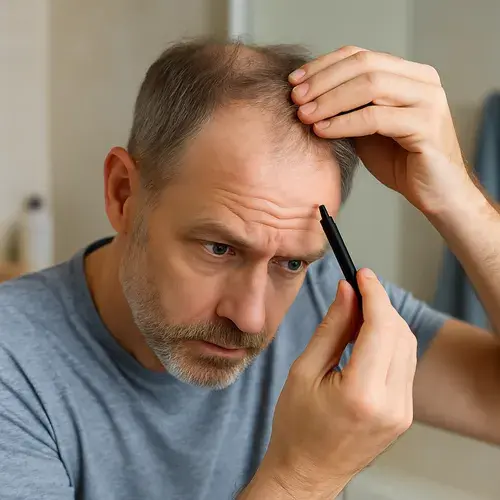Long-Term Management of Hair Loss: Planning for Ongoing Hair Health
Discover effective long-term hair loss management through understanding causes, medical treatments, surgical options, and preventive measures to maintain healthy, lasting hair growth.

Hair loss can be a distressing condition, affecting both men and women. While it may seem like a temporary issue, it often requires long-term management to achieve and maintain healthy hair. Understanding the causes, available treatments, and preventive measures is crucial for planning effective ongoing hair health strategies. In this article, we will explore the various aspects of long-term hair loss management, helping you make informed decisions about your hair care. Understanding Hair Loss Hair loss, also known as alopecia, can be caused by a variety of factors including genetics, hormonal imbalances, stress, and certain medical conditions. For instance, male pattern baldness is often linked to the conversion of testosterone into dihydrotestosterone (DHT), which can lead to hair thinning and loss. Women may experience hair loss due to hormonal changes during menopause or pregnancy. Medical Treatments One of the most effective long-term treatments for hair loss is medication. For men, finasteride (Propecia) is a commonly prescribed medication that works by blocking the conversion of testosterone to DHT, thereby slowing down hair loss and potentially promoting new hair growth. However, it's important to note that finasteride may not work as well for men over 60 and can have side effects such as diminished sex drive and an increased risk of prostate cancer. Other oral medications like spironolactone (Carospir, Aldactone) and dutasteride (Avodart) are also available but may have different side effects and efficacy rates. It's crucial to consult with a healthcare provider to determine the best medication for your specific condition. Surgical Options For those seeking a more permanent solution, hair transplantation can be an effective option. This procedure involves moving hair follicles from areas of dense growth to thinning areas. There are two main techniques: Follicular Unit Transplantation (FUT) and Follicular Unit Extraction (FUE). When performed by a skilled surgeon, hair transplantation can result in natural-looking hair growth. Non-Invasive Treatments Non-invasive treatments like Low-Level Laser Therapy (LLLT) are also gaining popularity. LLLT uses light energy to stimulate hair growth and is FDA-cleared for treating androgenetic alopecia. This treatment can be used in-office or as an at-home device and may be combined with other treatments for enhanced results. Preventive Measures Preventing further hair loss is just as important as treating it. Here are some preventive measures you can take: Healthy Diet: Eating a balanced diet rich in calories, protein, and iron is essential for maintaining healthy hair. Foods like salmon, spinach, and almonds are particularly beneficial. Stress Management: High levels of stress can contribute to hair loss. Engaging in stress-reducing activities such as yoga or meditation can help mitigate this effect. Hygiene: Washing and conditioning your hair without traumatizing it is crucial. Avoid using hot-oil treatments and chemical dyes or relaxers that can damage your hair. Regular Check-Ups: Regular appointments with a board-certified dermatologist can help diagnose the cause of your hair loss early on, improving the chances of effective treatment. Planning for Ongoing Hair Health Long-term management of hair loss involves a combination of medical treatments, preventive measures, and lifestyle changes. Here’s how you can plan for ongoing hair health: Consult a Dermatologist: The first step in managing hair loss is to consult a dermatologist who can diagnose the cause and recommend appropriate treatments. Choose the Right Treatment: Depending on the cause and severity of your hair loss, your dermatologist may recommend medication, surgery, or non-invasive treatments like LLLT. Follow Treatment Guidelines: Adhering to the prescribed treatment plan is crucial for achieving desired results. This may involve taking medications indefinitely or undergoing multiple sessions of non-invasive treatments. Maintain a Healthy Lifestyle: A balanced diet, stress management techniques, and proper hygiene practices can help prevent further hair loss and promote overall hair health. In conclusion, managing hair loss is not just about finding a quick fix but rather about adopting a long-term strategy that involves medical treatments, preventive measures, and lifestyle changes. By understanding the causes of hair loss and planning effectively for ongoing hair health, you can achieve and maintain healthy, beautiful hair.
Need Professional Consultation?
Our professional doctors will provide detailed hair and scalp analysis and develop personalized treatment plans.
Book Consultation Now